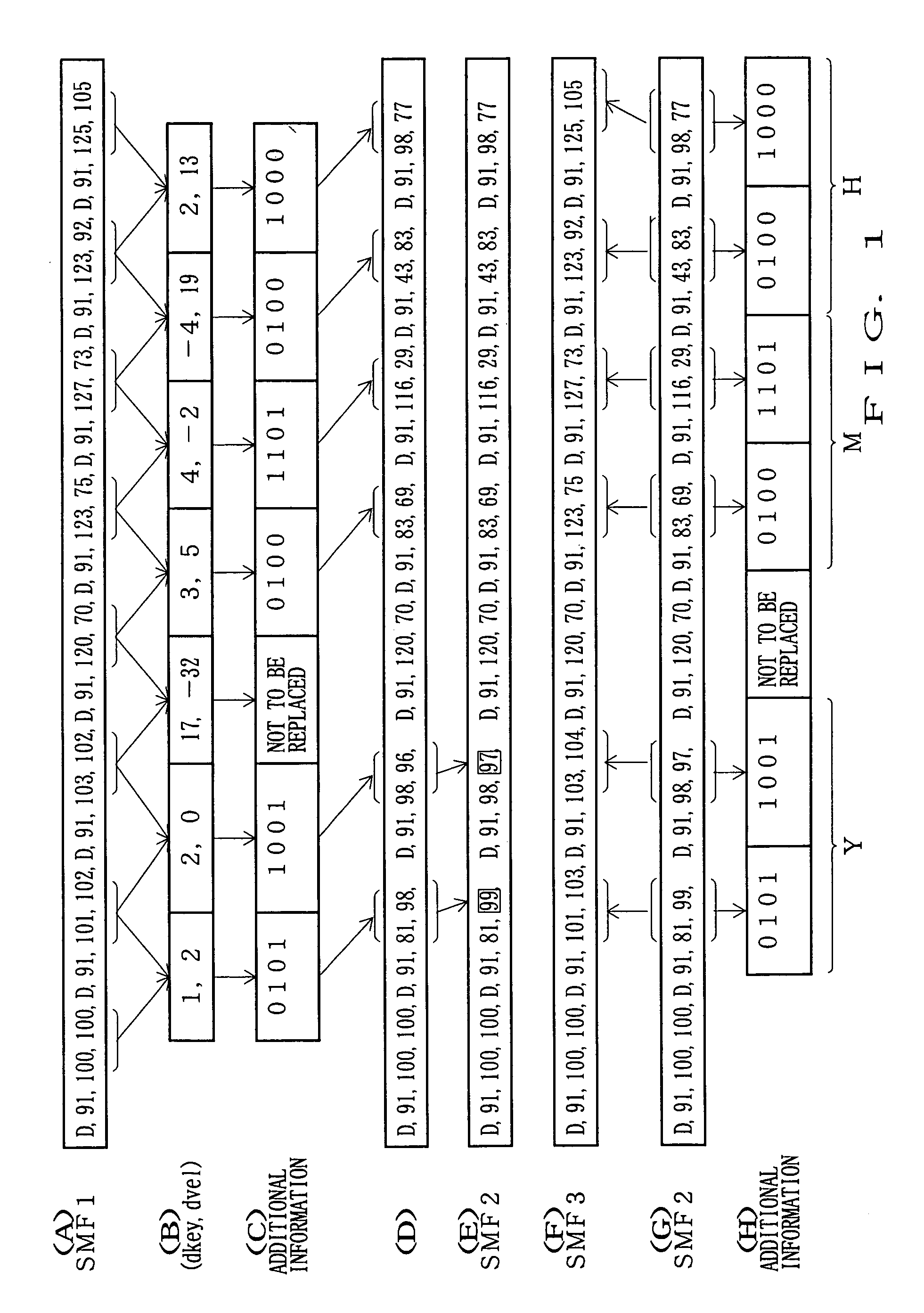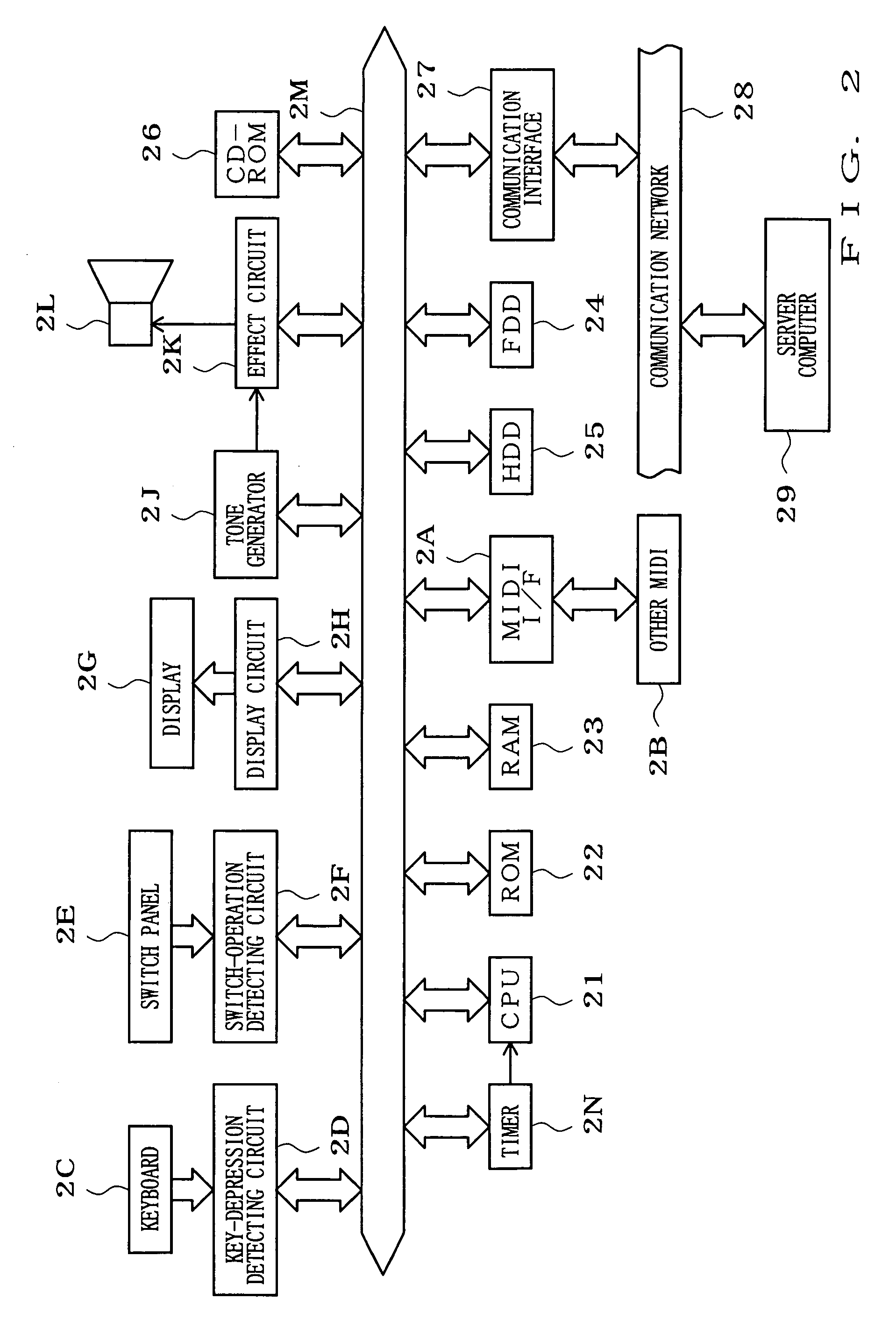Method and device for incorporating additional information into main information through electronic watermaking technique
a technology of electronic watermaking and main information, applied in the direction of unauthorized memory use protection, recording signal processing, instruments, etc., can solve the problems of copyright infringement, inability to be tolerated, and additional information, such as copyright indication data, is easily deleted, altered or rewritten on purpose or by mistake,
- Summary
- Abstract
- Description
- Claims
- Application Information
AI Technical Summary
Benefits of technology
Problems solved by technology
Method used
Image
Examples
first embodiment
[0077]FIG. 5 lists values that may be stored in the first key code and velocity registers b1 and c1 according to the Namely, FIG. 5 shows orthogonal coordinates where the vertical axis represents all key code values that may be stored in the first key code register b1 while the horizontal axis represents all velocity values that may be stored in the first velocity register c1 and where the originating point is defined by an intersection between a vertical center line passing between the velocity values “63” and “64” and a horizontal center line between the key code values “63” and “64”. This way, four different types of value polarity combination, of increasing and decreasing key code values (positive and negative values) and increasing and decreasing velocity values (positive and negative values), are allocated to four “quadrants”, one combination to each quadrant. Sixteen four-bit data constituting additional information are allocated to each of the quadrants. Namely, as shown in...
second embodiment
[0102]FIG. 7 is a diagram showing exemplary contents of the scramble decoding data to be embedded in the MIDI data according to the The scramble decoding data in this example consists of two bytes, where the upper four bits of the first byte represent an associated algorithm, the lower four bits of the first byte represent a specific number of events to be subjected to the scrambling process (“count”) and the eight bits of the second byte represent a numerical “value” corresponding to the algorithm.
[0103]Examples of the algorithm include one for modifying a note number of key-on data, one for replacing a note and velocity of key-on data with others, one for modifying interval data, and one for modifying channel data of key-on data. The “count” indicates how many of first key-on event data necessary for creating two ASCII characters, i.e., 16-bit data, are to be subjected to the scrambling process.
[0104]Whereas the first embodiment has been described as allowing four-bit data to be ...
PUM
 Login to View More
Login to View More Abstract
Description
Claims
Application Information
 Login to View More
Login to View More - R&D
- Intellectual Property
- Life Sciences
- Materials
- Tech Scout
- Unparalleled Data Quality
- Higher Quality Content
- 60% Fewer Hallucinations
Browse by: Latest US Patents, China's latest patents, Technical Efficacy Thesaurus, Application Domain, Technology Topic, Popular Technical Reports.
© 2025 PatSnap. All rights reserved.Legal|Privacy policy|Modern Slavery Act Transparency Statement|Sitemap|About US| Contact US: help@patsnap.com



